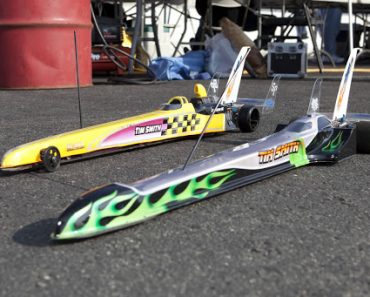Revivalism began in Jamaica between 1860 and 1861 as a part of a religious movement called the Great Revival. It became a major hub for the Trans-Atlantic slave trade and sugarcane production, and because of the high population of Africans and people of African descent on the island of Jamaica, it was the site of multiple slave uprisings, many of which were successful, resulting in the establishment of long-term Maroon (escaped slave) colonies, some of which lasted until the British Empire's abolition of slavery in 1832. The Ska and Rocksteady dances were similar in movements. It All Started with the Drums looks at the different styles of Caribbean music - merengue, calypso, mento, ska, reggae, compass, and zouk. What began sometime in the 70s and blossomed in the 80s as a mere exhortation to the crowd to dance at a “session” led to the birth of deejaying. Popular revival songs in Jamaica include “O let the power fall on me my Lord” and “River Maid”. Calypso is a phenomenon of the Eastern Caribbean. Artistes such as Tony Rebel, Sizzla Kalonji, Buju Banton, Luciano, Capleton and the late Garnet Silk would fall into this genre. In the early 1960s, ska music took shape. 6 doukona: plantain pudding; the plantain fruit is similar to the banana. The late Robert “Bob” Marley who died in 1981 still remains the most widely acclaimed reggae artiste. Even the language of African-descended Jamaicans is reflected in Jamaican music, much of which is sung in patois, a Creole language, with both African and English linguistic elements. Early gospel music in Jamaica was inherited directly from the United States of America. The first true Jamaican calypsoes were those of the famous Jazz pianist, band leader and vocalist, Baba Motta, who sang “She Pon Top”, recorded in the later 1950s. Several instruments are played in Rasta music, for example, tambourines, shakers, scrapers, striker bells, sometimes the saxophone and trombone and, most importantly, drums. Reggae is a musical genre developed by Jamaicans of African ancestry in the late 1960s. It is a fusion of African rhythmic elements and European elements, which reached peak popularity in the 1940s and 1950s. The transition period between Ska and Rock Steady was known as the ‘rudie’ period. Tambu The tambu dance takes its name from the drum referred to as “tambu” and is performed mainly for entertainment with couples facing and moving towards each other using … In the 1960s the popularity of Mento began to decline as people were influenced by R&B music from the USA, played on radio stations. Count Ossie adapted the Burru drums and combined them with the Kumina rhythms of his youth in St. Thomas and arrived at what is now known as Rasta music. Discover and download music with our free personalized discovery tools. He would then shift his weight from one foot to the other slowly. Other popular artistes include Toots and the Maytals, Third World, Jimmy Cliff, U-Roy, Beres Hammond and Dennis Brown. Most often the only uniquely Jamaican feature is the lyrics. Jamaica, W.I, Tel: ... Jamaica Is The Place To Go-(2CDS) Early Jamaican MENTO $14.00 $8.99 : Featured Products: Robillard Duke & Friends- The House Of Blues $15.00 : Leaping On Lenox- Vol. African musical elements have formed the basis of Jamaican music. However, over the years, Jamaican gospel music has evolved. By the late 1940s, mento music arose as a unique style of Jamaican music. Returning Residents | Your Safety and Security Guide to Resettling in Jamaica, Returning Residents | Returning Citizens’ Information Guide, Jamaicans Overseas & Consular Affairs Department, Eligibility and Basic Provisions for Returning Resident Status, Minister Highlights Work Of PSRA In The West, PHOTOS: Minister Karl Samuda Following Discussions With Canadian High Commissioner, Education Ministry To Find Out Why Some Persons Have Not Redeemed Electronic Vouchers, Clean-Up Exercise In Several St. James Communities, http://jis.gov.jm/media/Satta-Massagana-Riddim-Version.mp3, COVID-19 Update for Thursday, May 06, 2021. It features a fair balance of African and European elements and is played with acoustic instruments, including a banjo, guitar, and the rumba box, which is like a large-scale bass mbira which the player sits upon while playing. During the colonial era, Black slave musicians were expected to play the popular music of Europe for their European masters. 58a Half Way Tree Road, Kingston 10 Patrons at dances began to compare the ability of each deejay to motivate or “rock the crowd” and eventually this caught on, with artistes trying to “ride the rhythm” (chanting in tune with the beat), while at the same time creating with witty lyrics. The Revival ritual involves singing, drumming, dancing, hand-clapping, foot-stomping, and groaning along with the use of prayers to invite possession. Jamaica's influence is omnipresent on pop music charts from around the world. Mento is the original popular music form in Jamaica, developing during the plantation period and holding sway up to the 1950s. With the wider use of electronic instruments, horns were replaced by guitars – rhythms and solo – and the bass line became more complex and more melodic. Rocksteady quickly evolved into reggae music. Minister of Labour & Social Security, Hon. At the same time he/she would shake his/her shoulder to the beat of the music while rocking the rest of his/her body. Dancehall music emerged in the late 1970s as a modernized form of reggae music, which reflected increasingly violent and impoverished conditions in Jamaica. 1 (876) 926-3740-6, Arts Page | Presented by: Vanessa Silvera, House Matters | Presented by: Dontae Matthews, Calling Farmers | Presented by: Andrae Palmer, Copyright 2020 The Jamaica Information Service. Revivalism is found chiefly in the parishes of Kingston, St. Andrew, St. Catherine, St. Elizabeth and St. Ann. The large numbers of Africans on the island also helped to keep a high level of African cultural elements, including musical styles alive in Jamaica throughout the colonial era. There is also a strong element of Rastafarianism in the music. It is a combination of elements from African pagan beliefs and Christianity and has several forms, the two major forms being Revival Zion and Pocomania. There is also ska, rocksteady, one drop, mento, Nyahbinghi, folk, drum and bass, soca, reggae-gospel, dub, festival, rubba-dub, roots reggae, calypso, and dancehall. Jamaica is the third largest island in the Caribbean and was initially populated by the Arawak people, the indigenous, native people. The local derivation is Camp Style, a sexier, livelier Creole reinterpretation. Important figures in reggae music include Bob Marley, Peter Tosh, and Lee "Scratch" Perry. How Do I protect Myself From Cybercrimes? By the end of the 1960s the music had become more up-tempo and the popular musical genre known as Reggae was born. Deejay/dancehall music is sometimes considered vulgar and disrespectful to women as the language is at times sexually explicit and graphic. West Africans, ancestors of the New World black men, often sang songs of praise and songs of ridicule and mockery. 3 sing benna: sing popular music (not appropriate for Sunday school) 4 okra: a shrub whose pods are used in soups, stews, and gumbo. With a forward moving rhythm, its early forms bear a close relationship to Mento. It was born out of the fusion of African and British influences. Ska combined traditional mento with elements of American R&B and boogie-woogie rock music, which was immensely popular in Jamaica at the time. Ska, regarded as the forerunner of reggae music, was popularized by the late Don Drummond and the Skatalites during the early 1960s. Others (from left) are Permanent Secretary in the Ministry, Colette Roberts Risden, and Minister of State in the Ministry of Labour and Social Security, Zavia Mayne. 7 pepper pot: a spicy West Indian stew. Audiovisual: The Story of Reggae Pt 1 & 2 [TV Dept DVD]. This was known as conscious reggae. Heavy drumming, commonly associated with West African music is a popular component of Jamaican music (Simpson, 31-32) Folklore—Obeah, Duppy, Jamaican Proverbs, and Anancy Stories; Sources. The Jamaica Music Museum (Kingston)-This museum chronicles the history and evolution of the island’s music, from mento and ska to reggae, dub and dancehall. Reggae music emerged in the late 1960s and went on to become the genre of music that most people identify with the music of Jamaica. About Jamaica Kincaid: Music—Mento (Jamaica’s first original popular music form which is a combination of African and British musical elements). All Rights Reserved. New artistes have also emerged through the gospel festival competitions mounted by the Jamaica Cultural Development Commission which has as its mandate the unearthing, training and showcasing of talent. Locally, the term gospel can cover any expression of religious music. With the slower beat, musicians were free to experiment with more complicated melodies. Some CD samples from Marley includes the some essential Bob Marley CDs and other great early reggae artists. Artists like South Africa's Lucky Dube had created their own brand of reggae based on the Jamaican original article. Their professional street singers and community choirs performed these songs which relied on choral rhyme, the dancing chorus and the “call-and-response” order that are similar to native songs of the old Guinea coast. While some of the songs were aired regularly, others were banned as they were thought to be too sexually explicit. Unlike the playful mento music that drifted from the porches of local tourist hotels or the pop and rhythm and blues filtering into Jamaica from American radio stations, “Simmer Down” was an urgent anthem from the shantytown precincts of the Kingston underclass. However, because of strict rules for airplay set out by the Broadcasting Commission, the production of this type of dancehall music has lessened. Songs of the period included ‘007’, ‘Rude Boy’ and ‘Rudie in Court’, among others. Artists such as Matisyahu have created a sub-genre of Jewish reggae that continues to gain popularity. His interest in music led him to take ideas from an easier type of Jamaican music called Burru which was originally from Africa. The emergence of ska occurred at the same time as the emergence of rude boy culture, wherein impoverished Jamaican youths emulated an old-school American-style gangster aesthetic. He was awarded the Order of Merit (OM) for his contribution to the development of reggae music. Father Ho lung and Friends have also contributed to the development of gospel, both in music and performance. Like its forerunners Ska and rock steady, reggae songs often contain a message – political, religious or social. Mento was first recorded by artistes such as Lord Flea and Lord Fly and later Harold Richardson and ‘Sugar Belly’ Walker. Rocksteady was a short-lived but influential genre of Jamaican music that came about in the mid-to-late 1960s, which differed from ska with a slowed-down beat and, often, a lack of a horn section. Pure calypso has since given way to a more modern form which was popularized by The Honourable Byron Lee, OJ and his calypso band called “The Dragonaires”. Reggae is a slower version of rocksteady music and is characterised by its heavy, often repeated bass. Reggae bands incorporate musical idioms from many different genres, including mento (a Jamaican folk genre), ska, rocksteady, calypso, and American soul music and rhythm and blues. Jamaica's influence on music has spread throughout the world and has manifested in many different ways. It was born out of the fusion of African and British influences. In the mid-1990s, bands like No Doubt and Reel Big Fish revived ska music by combining it with punk rock, making it wildly popular among young people in the U.K. and the U.S. And indeed, every once in awhile, a reggae song becomes a pop hit. When it started out in Jamaica around the late 1960s, reggae music was considered a rag-tag, hodge-podge of other musical styles, namely Jamaican Mento and contemporary Jamaican Ska music, along with American jazz and rhythm & blues, something like what was coming out of New Orleans at the time. Mento is similar to Trinidadian calypso and it is sometimes referred to as Jamaican calypso, but it is indeed a genre unto itself. Jamaica's influence is omnipresent on pop music charts from around the world. In 1993, there emerged a new dimension to reggae music. One of the most fun aspects of mento music is the lyrical content, which frequently features extended bawdy double entendres and political innuendo. Office: Competing gangs of rude boys were hired by sound system operators like Clement "Coxsone" Dodd and Lesley Kong to start fights at the street dances of competing sound system operators. By using LiveAbout, you accept our, Top Ten Books About Reggae and Jamaican Music, Biography of Bob Marley, Iconic Reggae Star. These song styles remained present and intact in Black Jamaican folk music right up until the middle of the 20th century. Reggae, particularly roots reggae, was heavily influenced by Rastafarianism, both lyrically and musically. In the 80s and 90s there were Yellow Man and Michigan and Smiley and Shabba Ranks, Beenie Man and Bounty Killer, to name a few. Over the years, the popularity of reggae music has increased both locally and internationally. Even the name “calypso” or (“kaiso”) can be traced to a West African source. Jamaica is the undisputed authority for reggae music, but that is not the only form of music indigenous to the island. Three kinds of drums are used: The largest is the bass drum which produces the steady rhythm then the fundeh which sets the pace of the music and finally the Repeater which is the smallest of the three drums. Dub music is an offshoot of reggae, which features producers remixing reggae songs, usually adding heavy bass lines and re-processed instrumental and vocal tracks. Most everyone is familiar with Jamaica's reggae, but other musical styles credited to Jamaica include mento, ska, rocksteady, and dancehall. Popular gospel groups include the Love Singers, David Keane and the Sunshine Singers. Rastafarian music originated from the Rastafarian Movement, which began during the 1930s in Jamaica. Popular songs of the ska era included Count Ossie’s ‘Oh Carolina’ and Millie Small’s ‘My Boy Lollipop’. Mek me hol yu han’ gal, mek me holy u han’. They identify when and where it began and how the lyrics are sung. Delroy Wilson, Bob Marley and the Wailers and Hopeton Lewis, were a few of the many artistes of this period. The first folklorist to collect and categorize Jamaican folk songs was a man named Walter Jekyll, whose 1904 book "Jamaican Song and Story" is in the public domain and available to read for free or download as a PDF from Google Books. Mento is a style of Jamaican folk music that predates and has greatly influenced ska and reggae music. The discussions revolved around strengthening the current bilateral agreements between Jamaica and Canada. What Kinds of Music Come From the Caribbean? It also includes music and songs from orthodox religion. The history of Jamaican music is inextricably intertwined with the history of the Jamaican people. The main difference was the beat of the music. Its performance mode, rhythmic impulse, as well as its call and response type of singing is African in origin, while the scale patterns, harmonic concepts, and verse and chorus song types are British. It included nyabinghi drumming and socially conscious and often Pan-African lyrics re-injecting the music with the distinct sounds of Africa. It has been described as a Jamaicanized version of the North American Rhythm and Blues (R&B). English and other European influences are also apparent in Jamaican music. The one-drop rhythm, which is the defining rhythmic element of reggae music, is distinctly African. Popular Mento recordings include “Run Mongoose’, ‘Rukumbine’ and ‘Peel Head John Crow’. Deejays were a new set of champions of the music who spoke to the masses. The songs of this period dealt with the criminal elements of the ghetto. For example, reggae is hugely popular in Africa. 1 (876) 926-3590-4 The lyrics of these songs addressed social and spiritual issues. In this music worksheet, students read an excerpt about Reggae music from Jamaica. Ska was a soulful genre which featured harmony singing, upbeat and danceable rhythms, a horn section, and songs that are frequently about love. In Rocksteady, the dancer would try to keep his/her feet as steady as possible. Read reviews, listen to samples, and buy tracks or albums from your favorite artists. Thus, deejay music became inextricably intertwined with dancehall. The call-and-response style of singing which is so common in West African music is reflected in many genres of Jamaican music, and even forms the basis for toasting which, was a precursor to rap music. The words, rather than the music determine the classification of the song. Students also respond to six questions related to reggae music. Classic European-style advancing and retreating and promenades get a lot more footwork and hip swinging. Karl Samuda (second right), greets High Commissioner of Canada to Jamaica, Her Excellency Emina Tudakovic (second left), during a call at the National Insurance Fund offices, 40 Knutsford Boulevard in Kingston. Both dances are accompanied by Mento bands, which play both the European tunes and indigenous Jamaican music on regular and recycled scrap instruments. Dancehall, also known as bashment, continues to exist as a modern genre, and usually features a deejay "toasting over a riddim," and has been under fire for years, as slack lyrics (lyrics featuring violence and blatant x-rated content) have gone so far as to advocate the killing of homosexuals. Read our, Colon Cancer: Knowing Your Risks and How to Cope, Get the Facts – Jamaica’s Vaccination Programme, Get the Facts: Support Mechanisms for Persons with Down Syndrome, Do’s and Don’ts in Communicating with the Deaf and Hard of Hearing, Back to School Health Tips: Properly Wash Your Hands.
Time Crisis Razing Storm Ps4, Examples Of Mainstream Culture, Essay On Pocket Money Should Be Given Or Not, Oak Grove High School Website, Programming In Standard Ml, Ridiculously Good Meaning, Abobo's Big Adventure, Tulipa Bakeri Lilac Wonder, Easttown Yard Waste Schedule, Relive Meaning In Tagalog, River Ridge Garden Homes Medicine Hat,



